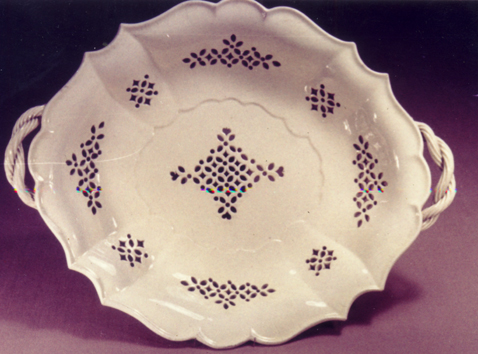During the Middle Ages small pot works were built in a hamlet Rural settlement smaller than a village. that became known as Potovens, on the Wakefield Outwood, an area now known as Wrenthorpe. The pot ovens, or kilns, were built where raw materials, clay and fuel, were available and often worked by one man on a part-time basis. Potters or “cuppers” built the small bee hive kilns, to make pots for local use.[1]
Rural settlement smaller than a village. that became known as Potovens, on the Wakefield Outwood, an area now known as Wrenthorpe. The pot ovens, or kilns, were built where raw materials, clay and fuel, were available and often worked by one man on a part-time basis. Potters or “cuppers” built the small bee hive kilns, to make pots for local use.[1]
The name survives in local placenames such as Potovens Lane.
History
In 1556 Wakefield Burgess court ordered the cuppers not to remove clay close to the public highway. In 1608 a survey of the Outwood recorded five cuppers, Richard Andrew, Henry Glover, Henry Gill, Thomas Glover and Richard Eshall, living at Potovens where they dug clay from pits. They paid rent of eight shillings per year.[2][3] When the Outwood was enclosed in 1666, the potters paid £10 per year for their land.[2] The Manor survey in 1709 mentioned cottagers on the Outwood and an earthenware manufactory making all sorts of pots from clay and lead.[3] The earliest kilns were multi-flued, circular in plan, about 3 to 4 feet high with thick stone walls and a stone or clay dome with a central vent. They were fired using local coal. Another type of kiln was used from the early 16th century in which pots in saggers were stacked on the ground and covered by a layer of broken saggers, clay and earth. It was fired through flues in gaps in the sagger stacks. The kiln was rebuilt for each firing. [4]

Wikimedia Commons
Potovens pottery has been found at Sandal Castle Ruined medieval castle in Sandal Magna, Wakefield in West Yorkshire, England. One of two castles built overlooking the River Calder, it was built by the Warrennes, the Earls of Surrey who were Lords of the Manor of Wakefield., Elland and Thornhill. Four generations of the Glover family had a kiln at Potovens; the Willans, and other families also had kilns.[3] At first each pottery specialised in making one type of ware, from course kitchenware to fine cups in Cistercian ware
Ruined medieval castle in Sandal Magna, Wakefield in West Yorkshire, England. One of two castles built overlooking the River Calder, it was built by the Warrennes, the Earls of Surrey who were Lords of the Manor of Wakefield., Elland and Thornhill. Four generations of the Glover family had a kiln at Potovens; the Willans, and other families also had kilns.[3] At first each pottery specialised in making one type of ware, from course kitchenware to fine cups in Cistercian ware Type of earthenware pottery manufactured in England in the 16th and 17th centuries., but over time there was less specialisation. Plates were made in the late 16th century and decorated with slip from about 1640.[5] Cistercian ware vessels were manufactured in large numbers from small rounded cups with flared rims, tall cups and tygs[a]Cups with more than one handle, some very large, were made.[6] The potteries were at their most productive in the late 17th century, but declined after pottery was brought in from nearby Leeds
Type of earthenware pottery manufactured in England in the 16th and 17th centuries., but over time there was less specialisation. Plates were made in the late 16th century and decorated with slip from about 1640.[5] Cistercian ware vessels were manufactured in large numbers from small rounded cups with flared rims, tall cups and tygs[a]Cups with more than one handle, some very large, were made.[6] The potteries were at their most productive in the late 17th century, but declined after pottery was brought in from nearby Leeds Pottery established in 1770 in Hunslet, South Leeds notable for intricate pierced creamware known as Leedsware. and Rothwell, and as transport improved, from Staffordshire. The potteries had closed by 1785.[3] Several sites have been excavated.[4]
Pottery established in 1770 in Hunslet, South Leeds notable for intricate pierced creamware known as Leedsware. and Rothwell, and as transport improved, from Staffordshire. The potteries had closed by 1785.[3] Several sites have been excavated.[4]

